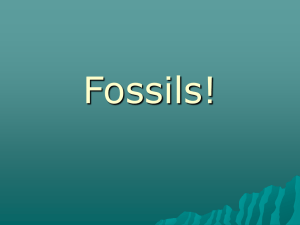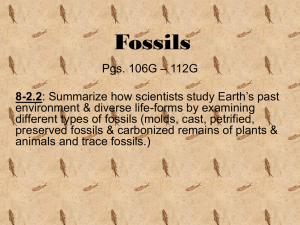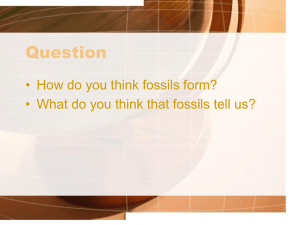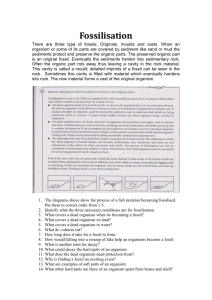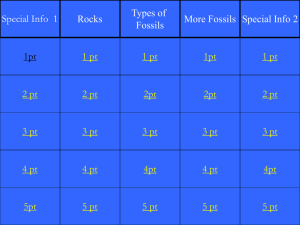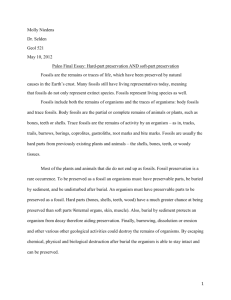Earth Science
advertisement
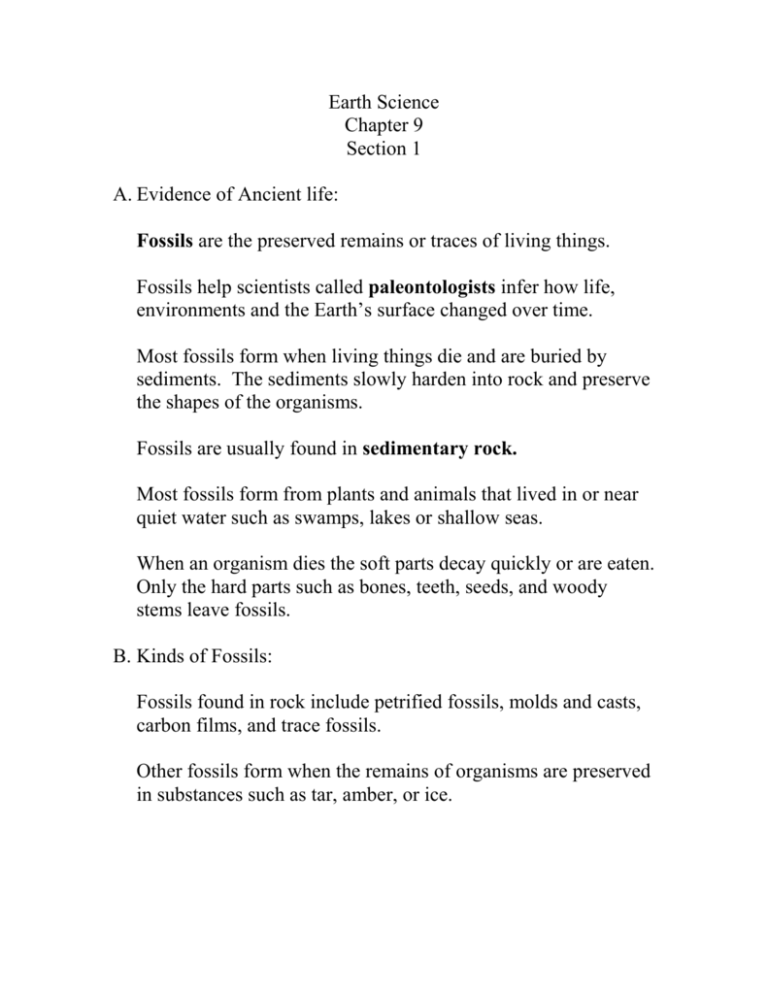
Earth Science Chapter 9 Section 1 A. Evidence of Ancient life: Fossils are the preserved remains or traces of living things. Fossils help scientists called paleontologists infer how life, environments and the Earth’s surface changed over time. Most fossils form when living things die and are buried by sediments. The sediments slowly harden into rock and preserve the shapes of the organisms. Fossils are usually found in sedimentary rock. Most fossils form from plants and animals that lived in or near quiet water such as swamps, lakes or shallow seas. When an organism dies the soft parts decay quickly or are eaten. Only the hard parts such as bones, teeth, seeds, and woody stems leave fossils. B. Kinds of Fossils: Fossils found in rock include petrified fossils, molds and casts, carbon films, and trace fossils. Other fossils form when the remains of organisms are preserved in substances such as tar, amber, or ice. Process for a fossil to form: 1. Petrified fossils – meaning “turning to stone”. Fossils in which mineral replace all or part of an organism. These fossils form when sediments cover the organism, water rich in dissolved minerals, seeps into space in the cells. Over time the water evaporates, leaving behind the hardened minerals. 2. Molds and Casts - A mold is a hollow area in sediment in the shape of an organism. A cast is a copy of the shape of an organism. The mold and cast have preserved details of the animal’s structure. 3. Carbon films - A very thin coating of carbon on a rock. All living things contain carbon. When sediment buries an organism some of the material that make up the organism decay to a gas, the gas leaves the sediment leaving behind the carbon in a thin film. This process can preserve the delicate parts of plants and insects. 4. Trace fossils - fossils that provide evidence of the activities of an ancient organism. Footprints are an example of a trace fossil. Footprint fossils can provide the following clues: a. How big the animal was? b. Did it walk on two or four legs? c. Did it travel alone, in groups? Other examples of trace fossils. Trails they followed Burrows they lived in 5. Preserved remains – Some processes preserve the remains of the organism with little or no change. a. Many fossils found in tar pits, such as the Rancho La Brea tar pits in Los Angeles. The tar protected the organism from decay. b. Organisms have been preserved in amber. Amber is the hardened resin or sap of evergreen trees. Insects are trapped in the sap and preserved from decay. c. Freezing – Another way of preserving the remains of an organism. The frozen remains of the Wooly Mammoth have been found in Siberia and Alaska. Even the skin and hair is completely preserved. C. Change Over time: The fossil record provides evidence about the history of life on Earth. The fossil record also shows that different groups of organisms have changed over time. Evolution – is the gradual change in living things over long periods of time. The fossil record also shows that many types of organisms have become extinct. Extinct means that the organism no longer exist and will never again live on Earth.

